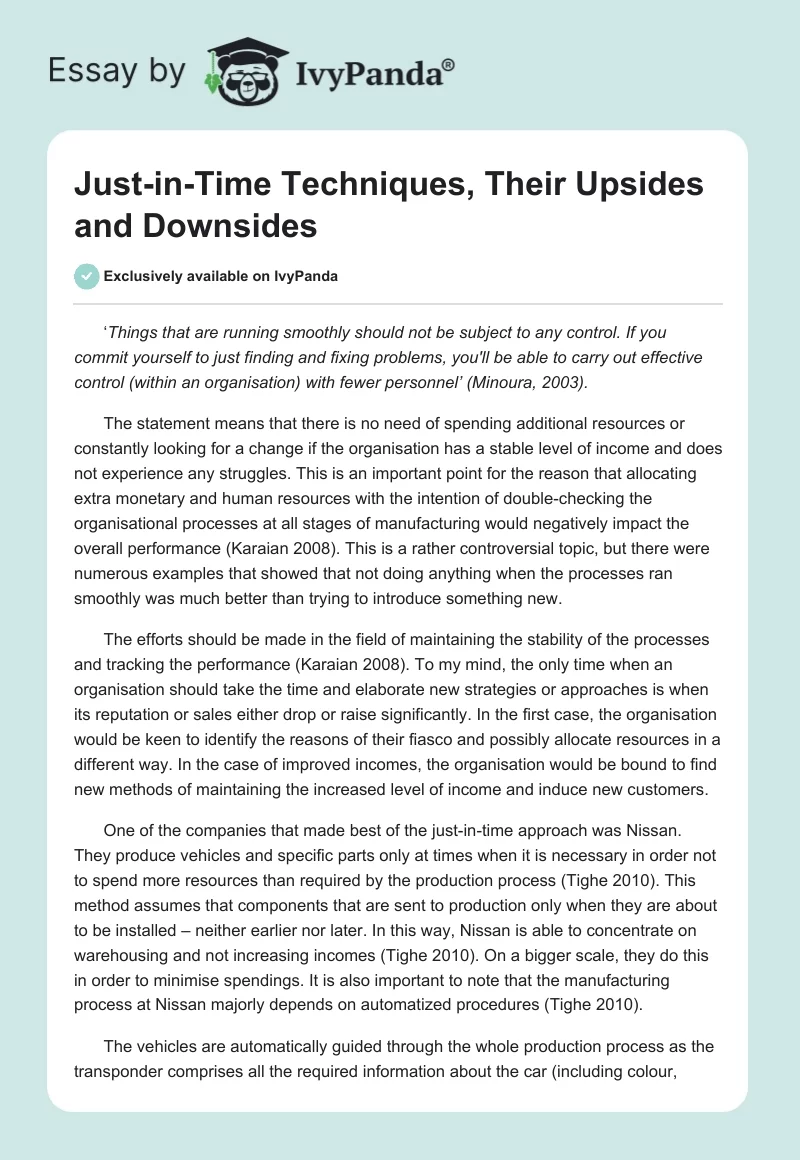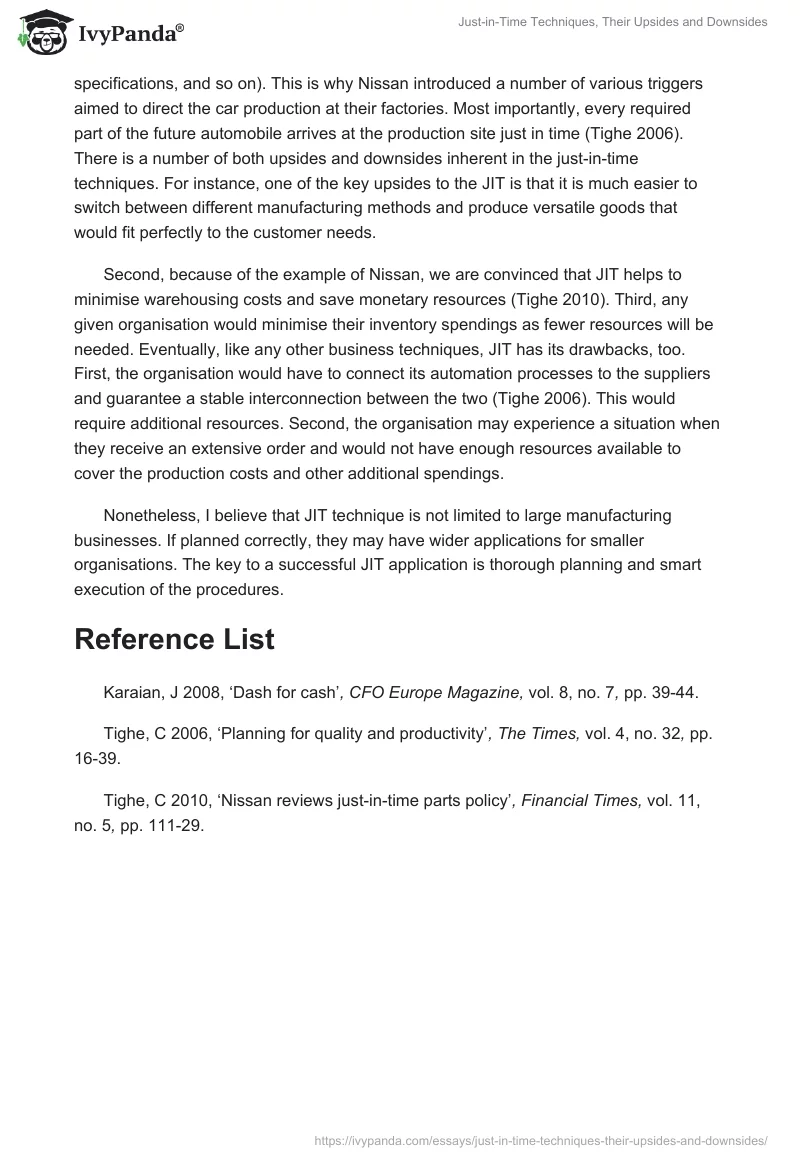‘Things that are running smoothly should not be subject to any control. If you commit yourself to just finding and fixing problems, you’ll be able to carry out effective control (within an organisation) with fewer personnel’ (Minoura, 2003).
The statement means that there is no need of spending additional resources or constantly looking for a change if the organisation has a stable level of income and does not experience any struggles. This is an important point for the reason that allocating extra monetary and human resources with the intention of double-checking the organisational processes at all stages of manufacturing would negatively impact the overall performance (Karaian 2008). This is a rather controversial topic, but there were numerous examples that showed that not doing anything when the processes ran smoothly was much better than trying to introduce something new.
The efforts should be made in the field of maintaining the stability of the processes and tracking the performance (Karaian 2008). To my mind, the only time when an organisation should take the time and elaborate new strategies or approaches is when its reputation or sales either drop or raise significantly. In the first case, the organisation would be keen to identify the reasons of their fiasco and possibly allocate resources in a different way. In the case of improved incomes, the organisation would be bound to find new methods of maintaining the increased level of income and induce new customers.
One of the companies that made best of the just-in-time approach was Nissan. They produce vehicles and specific parts only at times when it is necessary in order not to spend more resources than required by the production process (Tighe 2010). This method assumes that components that are sent to production only when they are about to be installed – neither earlier nor later. In this way, Nissan is able to concentrate on warehousing and not increasing incomes (Tighe 2010). On a bigger scale, they do this in order to minimise spendings. It is also important to note that the manufacturing process at Nissan majorly depends on automatized procedures (Tighe 2010).
The vehicles are automatically guided through the whole production process as the transponder comprises all the required information about the car (including colour, specifications, and so on). This is why Nissan introduced a number of various triggers aimed to direct the car production at their factories. Most importantly, every required part of the future automobile arrives at the production site just in time (Tighe 2006). There is a number of both upsides and downsides inherent in the just-in-time techniques. For instance, one of the key upsides to the JIT is that it is much easier to switch between different manufacturing methods and produce versatile goods that would fit perfectly to the customer needs.
Second, because of the example of Nissan, we are convinced that JIT helps to minimise warehousing costs and save monetary resources (Tighe 2010). Third, any given organisation would minimise their inventory spendings as fewer resources will be needed. Eventually, like any other business techniques, JIT has its drawbacks, too. First, the organisation would have to connect its automation processes to the suppliers and guarantee a stable interconnection between the two (Tighe 2006). This would require additional resources. Second, the organisation may experience a situation when they receive an extensive order and would not have enough resources available to cover the production costs and other additional spendings.
Nonetheless, I believe that JIT technique is not limited to large manufacturing businesses. If planned correctly, they may have wider applications for smaller organisations. The key to a successful JIT application is thorough planning and smart execution of the procedures.
Reference List
Karaian, J 2008, ‘Dash for cash’, CFO Europe Magazine, vol. 8, no. 7, pp. 39-44.
Tighe, C 2006, ‘Planning for quality and productivity’, The Times, vol. 4, no. 32, pp. 16-39.
Tighe, C 2010, ‘Nissan reviews just-in-time parts policy’, Financial Times, vol. 11, no. 5, pp. 111-29.


